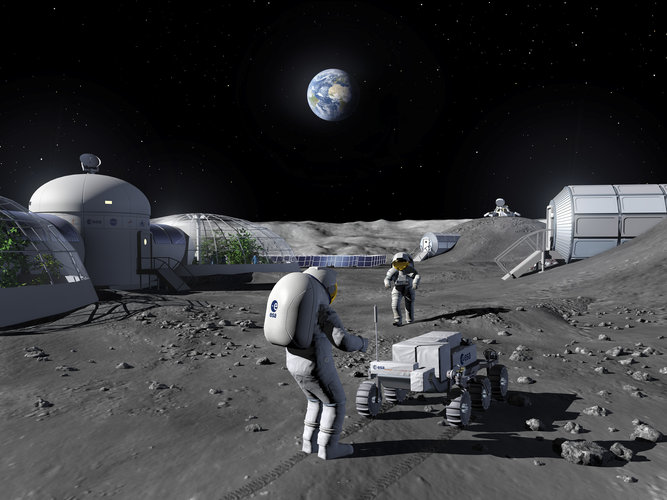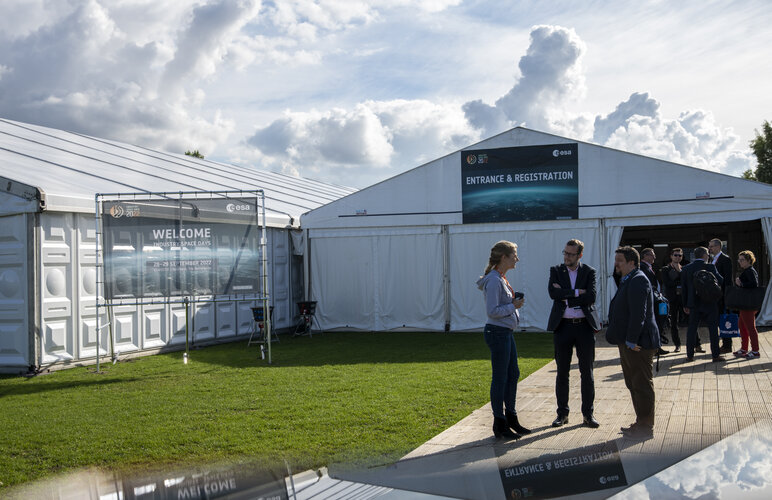
Copernical Team
Elon Musk may help NASA extend life for Hubble
 The U.S. space agency, NASA, said it signed an agreement with Elon Musk's SpaceX to study whether the life expectancy of the venerated Hubble Space Telescope can be extended.
NASA said Thursday it has no plans to carry out or fund a service mission for the Hubble Space Telescope. Instead, it will carry out a feasibility study to see if SpaceX can use its Crew Dragon capsules to do the h
The U.S. space agency, NASA, said it signed an agreement with Elon Musk's SpaceX to study whether the life expectancy of the venerated Hubble Space Telescope can be extended.
NASA said Thursday it has no plans to carry out or fund a service mission for the Hubble Space Telescope. Instead, it will carry out a feasibility study to see if SpaceX can use its Crew Dragon capsules to do the h Solar power beams: a step towards cleaner energy
 Beaming solar power could help Europe access more renewable energies, in an independent way. Airbus has now demonstrated how this new technological concept could work in its X-Works Innovation Factory.
Everything is illuminated, thumbs up. Jean-Dominique Coste, Yoann Thueux and their colleagues have just shown decision-makers from politics and industry the inner workings of a new energy co
Beaming solar power could help Europe access more renewable energies, in an independent way. Airbus has now demonstrated how this new technological concept could work in its X-Works Innovation Factory.
Everything is illuminated, thumbs up. Jean-Dominique Coste, Yoann Thueux and their colleagues have just shown decision-makers from politics and industry the inner workings of a new energy co Wanted: firms to connect and guide Moon missions

Are you ready to join ESA’s initiative to support European space companies to create a constellation of lunar satellites that connect and guide missions to the Moon?
Firefly Aerospace reaches orbit with new Alpha rocket
A new aerospace company reached orbit with its second rocket launch and deployed multiple small satellites on Saturday.
Firefly Aerospace's Alpha rocket lifted off from Vandenberg Space Force Base, California, in early morning darkness and arced over the Pacific.
"100% mission success," Firefly tweeted later.
A day earlier, an attempt to launch abruptly ended when the countdown reached zero. The first-stage engines ignited but the rocket automatically aborted the liftoff.
The rocket's payload included multiple small satellites designed for a variety of technology experiments and demonstrations, as well as educational purposes.
The mission, dubbed "To The Black," was the company's second demonstration flight of its entry into the market for small satellite launchers.
The first Alpha was launched from Vandenberg on Sept. 2, 2021, but did not reach orbit.
One of the four first-stage engines shut down prematurely but the rocket continued upward on three engines into the supersonic realm where it tumbled out of control.
The rocket was then intentionally destroyed by an explosive flight termination system.
Firefly Aerospace said the premature shutdown was traced to an electrical issue, but that the rocket had otherwise performed well and useful data was obtained during the nearly 2 1/2 minutes of flight.
NASA eyes November for launch attempt of Moon rocket

The US space agency, which was forced to postpone its latest liftoff attempt due to massive Hurricane Ian which hammered Florida this week, announced it was preparing its next launch window for between November 12 and November 27.
"Over the coming days," NASA said in a blog post, the team will assess conditions and necessary work and "identify a specific date for the next launch attempt."
Officials had so far refused to completely shut the door on an earlier attempt in October.
The SLS rocket, the most powerful ever designed by NASA, had to be returned to its storage hangar at Kennedy Space Center on Tuesday in order to shelter it from the approach of Hurricane Ian.
The storm devastated parts of Florida but the rocket itself suffered no damage, NASA said.
Planning efforts for the November launch window will allow "time for employees at Kennedy to address the needs of their families and homes after the storm" and in the run up to the next mission attempt.
Tents for Industry Space Days
 Image:
Tents for Industry Space Days
Image:
Tents for Industry Space Days Week in images: 26-30 September 2022

Week in images: 26-30 September 2022
Discover our week through the lens
Venus: The trouble with sending people there

Venus, often called Earth's "evil twin" planet, formed closer to the sun and has since evolved quite differently from our own planet. It has a "runaway" greenhouse effect (meaning heat is completely trapped), a thick carbon-dioxide-rich atmosphere, no magnetic field and a surface hot enough to melt lead.
Several uncrewed scientific missions will study how and why that happened in the next decade. But now some scientists want to send a crewed mission there as well for a flyby. Is that a good idea?
With a slightly smaller diameter than Earth, Venus orbits closer to the sun. This means that any water on the surface would have evaporated shortly after its formation, starting its greenhouse effect. Early and sustained volcanic eruptions created lava plains and increased the carbon dioxide in the atmosphere—starting the runaway greenhouse effect, which increased the temperature from just a little higher than Earth's to its current high value of 475°C.
While the Venus year is shorter than ours (225 days), its rotation is very slow (243 days) and "retrograde"—the other way round to Earth. The slow rotation is related to a lack of magnetic field, resulting in a continuing loss of atmosphere.
Europe’s space industry gathers at ESA

ESA welcomed a record 1700 visitors from 800 companies and institutions to its Industry Space Days event on 28–29 September at ESTEC, its technical centre in The Netherlands. It is a place where industry can meet and share their ideas for new emerging uses of space and commercial potential.
New rocket company fails to achieve launch on 2nd attempt
A year after its first rocket launch failed, a new aerospace company was unsuccessful early Friday in its second attempt to place multiple satellites into orbit.
Firefly Aerospace's Alpha rocket was unable to lift off from Vandenberg Space Force Base, California, and follow a planned arc over the Pacific Ocean toward space.
A live video feed showed the launch countdown go to zero and then abort at 12:52 a.m. Friday.
"The vehicle went into auto abort after ignition. This is designed into the system to ensure safety," the company said in a Twitter post. "The team scrubbed tonight's launch attempt and is reviewing data to determine our next launch window."
The rocket's payload included multiple small satellites designed for a variety of technology experiments and demonstrations as well as educational purposes.
The mission, dubbed "To The Black," was the company's second demonstration flight of its entry into the market for small satellite launchers.
The first Alpha was launched from Vandenberg on Sept. 2, 2021, but did not reach orbit.
One of the four first-stage engines shut down prematurely but the rocket continued upward on three engines into the supersonic realm where it tumbled out of control.
The rocket was then intentionally destroyed by an explosive flight termination system.
































